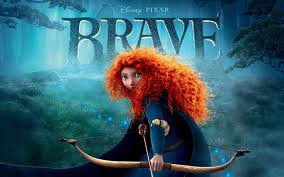In my review of Disney’s most recent princess movie, Frozen, I praised it as being a more modern rendition of Disney’s classic princess formula. While I tried to briefly explain what I mean by that, my thoughts on Frozen understandably left some people a little confused. After all, what about out-of-the-box hits like Brave or Mulan? Those are both great princess movies featuring protagonists and stories unlike any of the other Disney princess movies, aren’t they? In this post, I want to clarify what I mean when I say Frozen is an improvement of the classic Disney princess formula and why I put Mulan and Brave in slightly different categories. To start, let me define what I consider to be the classic formula.
Princess Protagonist + Romance-focused Plot = Classic Disney Princess Formula
The basic elements of the classic Disney princess formula are a princess protagonist (born royal or married into it) and a plot centered around romance. That is not to say that there are not other plots in the movie other than romance, but that romance plays a starring role in the story. The classic formula is called such because these are the basic elements of the oldest Disney princess movies (Snow White, Cinderella, and Sleeping Beauty) and remains the dominate formula in their princess films (The Little Mermaid, Beauty and the Beast, The Princess and the Frog, Tangled).
On a side note, Jasmine from Aladdin is an exception to the formula because she is not the protagonist of the movie she appears in, but rather the female lead and love interest of the protagonist, Aladdin. Anyway, now let me break down why Mulan, Brave, and Frozen do or don’t fit this formula.
Mulan: Non-princess Female Protagonist = Not a Disney Princess Movie
I’ve written about this before, but it never hurts to say it again. Disney markets Mulan as a princess. In fact, the only time we see Mulan nowadays in when a dolled up version of her appears in banners brimming with all the lovely ladies of Disney’s princess stories or in other princess-themed Disney merchandise. Therefore, it’s easy to forget that Mulan has no connection to royalty other than saving the Emperor’s hide at the end of her already epic adventure.
While Disney may call Mulan a princess, I see no reason to put her in that category. Her story is much closer to the many male-centered Disney adventures that focus on the growth of a young male protagonist and his relationship with friends and/or family. The only real similarity that I see is that Mulan is a story centered on a woman, just like Disney’s princess movies. That, however, doesn’t mean I have to include her in the princess category and since comparing Disney princess movies to Mulan is like comparing them to The Lion King or Hercules, I don’t. That comparison is fine and doable, but it’s different from comparing a princess movie to a princess movie.
Brave: Princess Protagonist + Non-romance-focused Plot = Non-Traditional Princess Movie
Brave, on the other hand, is a movie I count as a Disney princess movie because it does feature a princess protagonist. I would, however, consider this movie to be a non-traditional Disney princess movie. Why? Because Brave throws out the romance plot so central to the majority of Disney princess movies in favor of focusing on a mother-daughter relationship. Of course, other Disney princess movies I’ve classified as classic, romance-based plots feature other types of relationships, too, like Ariel’s relationship with her father, but the type of relationship that is most central to those plots is the romance. In Brave, the main plot revolves around how the heroine and her mother come to understand each other when they are forced to work together to undo a spell, pushing what may have been a sub-plot (the heroine’s relationship with her parents) in another princess movie to the forefront.
Frozen: Princess Protagonist + Romance Plot + Non-romance Focused Plot = Tweaked Classic Formula
Frozen falls somewhere in between the pure classic formula and the non-traditional formula, but because the protagonist is a princess and romance, while not the only important plot, is still a central plot, I’m considering it an upgraded version of the classic formula. It mixes elements of the classic formula (romance) with aspects of non-traditional princess movies like Brave (focus on relationships other than romantic ones).
As I said earlier, some of the Disney movies I’ve placed under the category of “classic formula” do have other sub-plots dealing with non-romantic relationships and wishes for freedom/adventure, but those sub-plots are just that–sub-plots. They take a backseat to the main romance plot or are wrapped up tightly in it. For example, getting a chance to see a new world is acted on and achieved only through Ariel’s romance with Prince Eric; Jasmine and Rapunzel ultimately only get their desired freedom through their relationships with their love interests; Tiana has dreams of owning and running her own restaurant, but the story is not about her accomplishing that dream, but of her romantic relationship with Prince Naveen, etc. On the other hand, Anna’s romance and her wish to help/have a relationship again with her sister are equally important in Frozen. Romance is the focus of a good portion of the movie, but obtaining goal A doesn’t get overshadowed by romance nor does Anna’s romantic relationship mean the achievement of that goal.
Pocahontas probably falls somewhere in this group, too. The protagonist is a princess, but unlike Brave, there is a strong romance-focused plot. Like Frozen, there is also another strong plot running alongside the romance–the tension between the English settlers and Pocahontas’ tribe, which the heroine and her love interest try to bridge. However, it’s been years since I’ve seen Pocahontas so, that’s one I need to revisit.
Anyway, that’s it! To some, it may seem that I’m splitting hairs, but I hope this makes my stance a little clearer.



